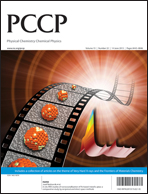New Li2FeSiO4–carbon monoliths with controlled macropores: effects of pore properties on electrode performance†
Abstract
Monolithic Li2FeSiO4–carbon composites with well-defined macropores have been prepared from the silica-based gels containing Li, Fe, and carbon sources. The macroporous precursor gels can be fabricated by the sol–gel method accompanied by phase separation. A fine control of the macropore size in the resultant composites has been achieved by controlling the macropore size of the precursor gels simply by adjusting the starting compositions. The effects of pore properties on Li insertion–


 Please wait while we load your content...
Please wait while we load your content...